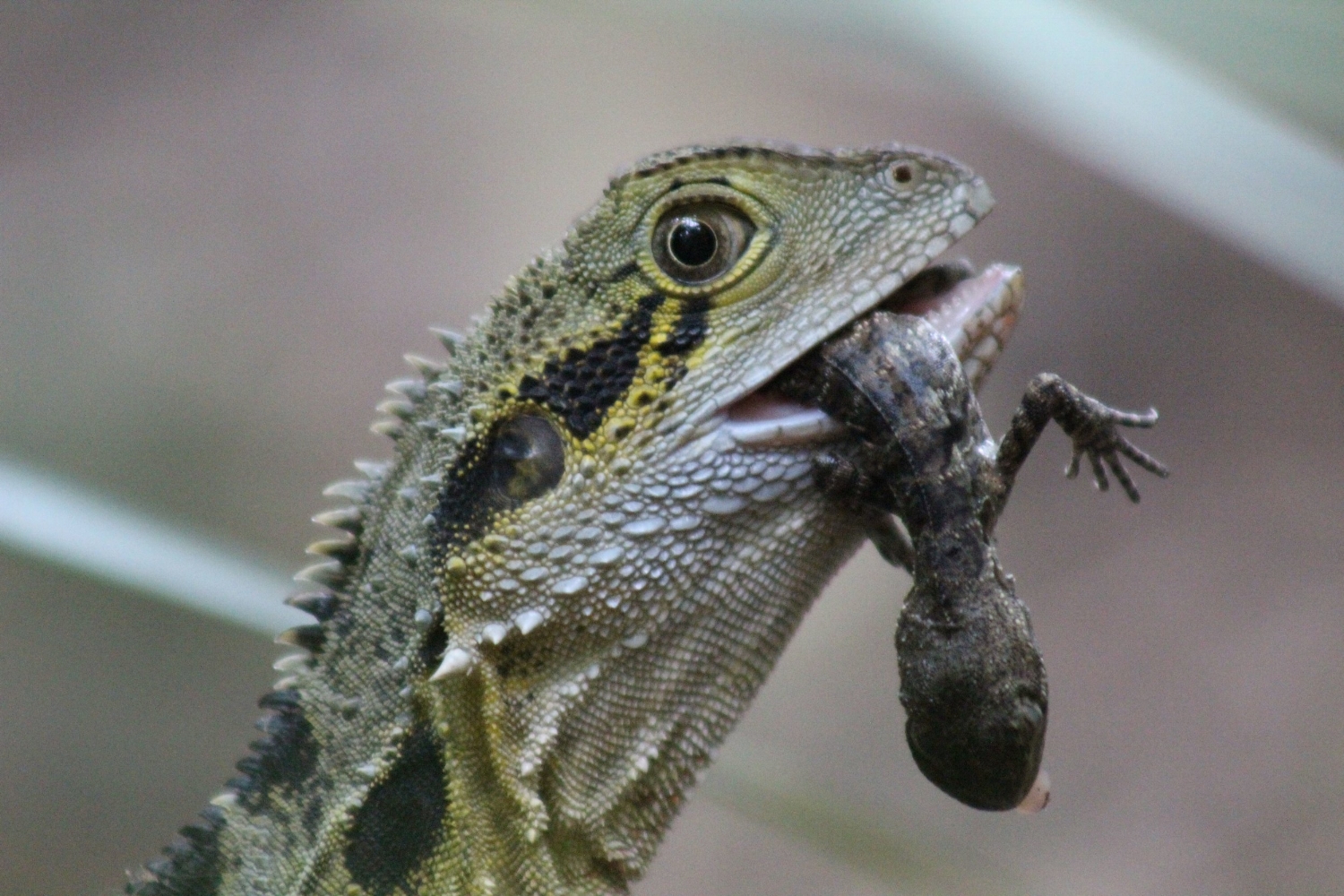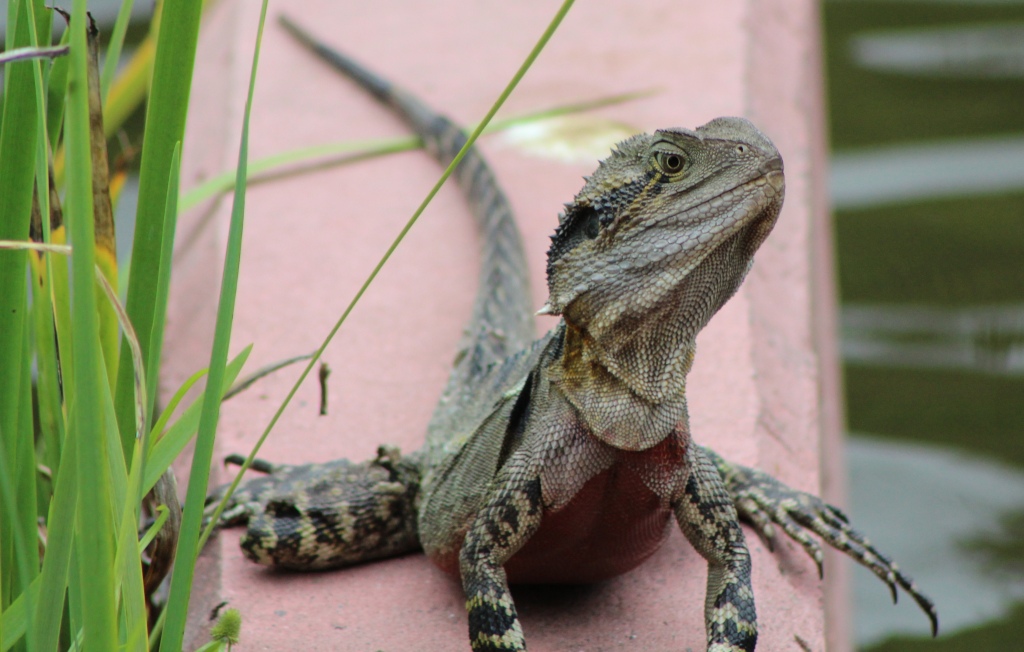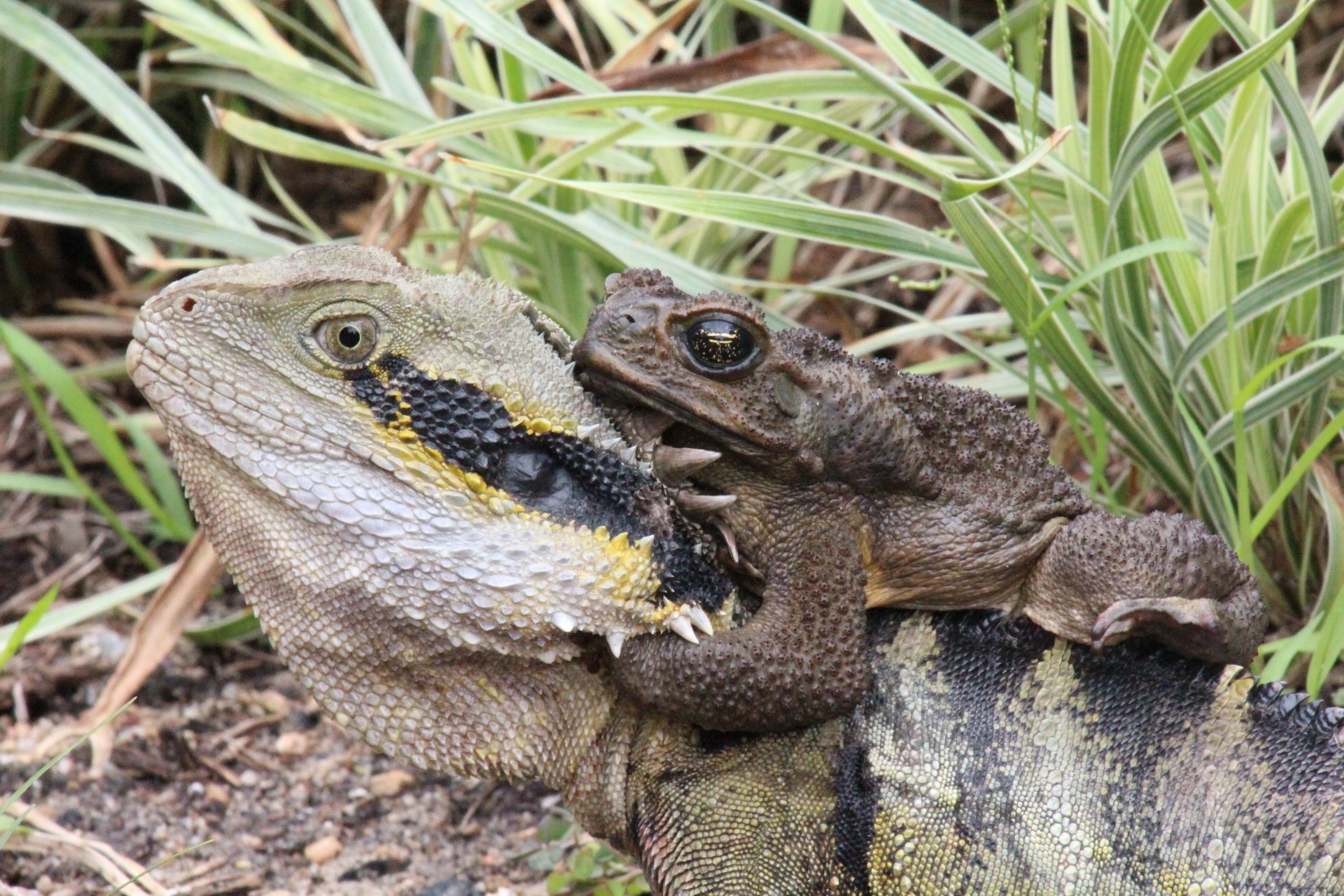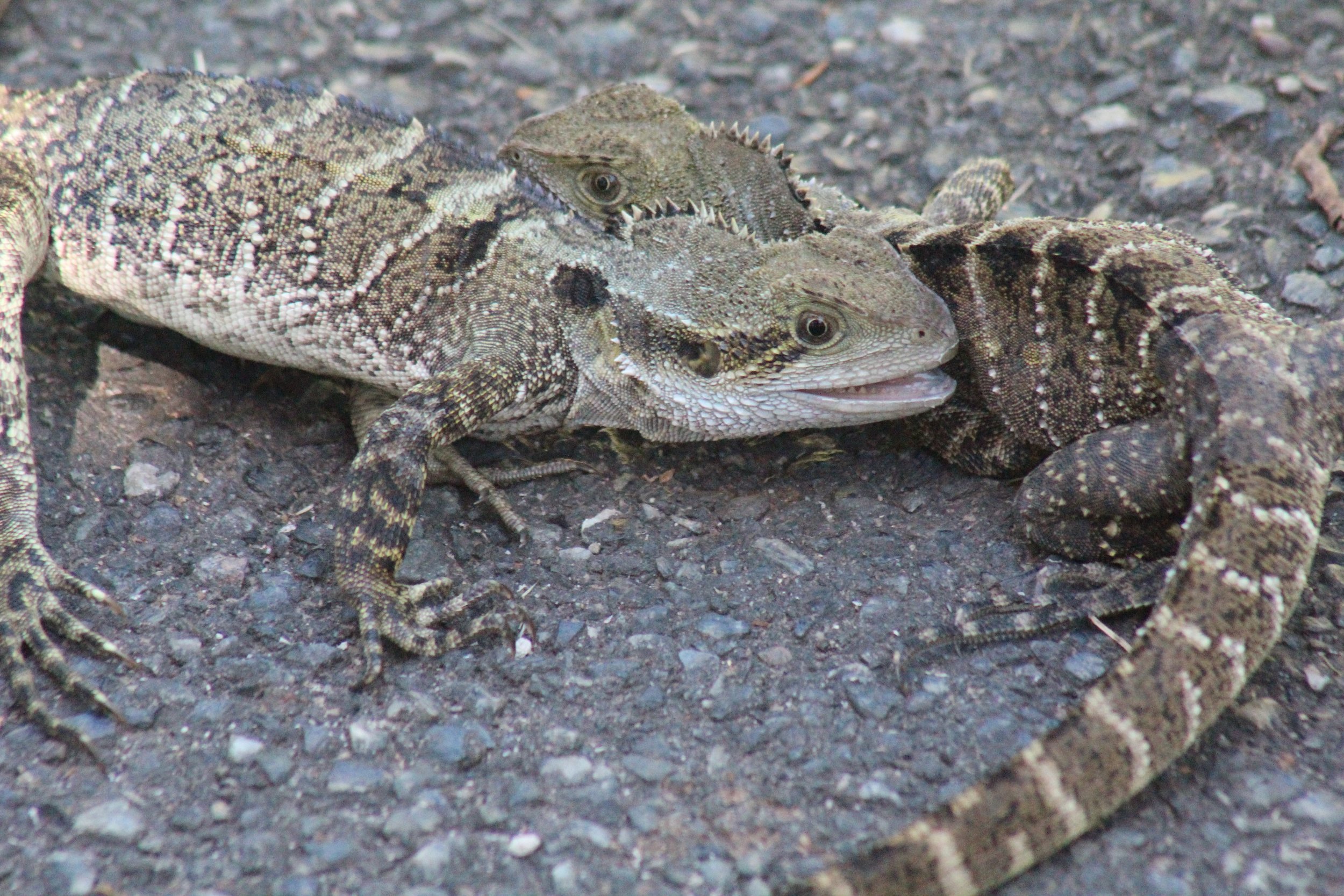Eastern Water Dragons
History
Dr Frere established her long-term study of eastern water dragons in sites around Brisbane's CBD in 2010. These dragons are bigger and bolder than their non-urban counterparts. They are also diversifying at rates that allows for the study of evolution in action.
Dragons in Brisbane city show significant levels of genetic divergence despite the small geographic distances between parks (<5 km), and significant differences in morphology (body size, head and limb shape and forelimb and hindlimb length) depending on the park they reside in.
Study Site
Our main study site is Roma Street Parkland, which has a large population of 350+ dragons, each of which maintains a specific home range. Our study has shown that, like mammals, dragons have preferred associates or "friends", social dominance hierarchies, and even share avoidances.
Our team is at the field site for 7 months of the year, when the dragons are out of hibernation. Each dragon in the Parkland is identified by a unique scale pattern around each eye.
By studying the behaviour and social networks of these lizards over their lifespans and across generations, we are able to investigate questions about the importance of sociality to health, reproductive success and evolution.
SCIENCE COMMUNICATION
Listen to Dr Frere on Radio National's Off Track program
fieldwork videos
Barron (left) and Quad (right) are two of our oldest males we track. We've been recording their behaviour and movements for over 7 years! Here, the two males are engaging in a fight for territory. Using their powerful jaws they lock heads, leaving a lot of our dragons with facial injuries.
Here are two dragons we track, Scout and Ethel, mating at Roma Street Parklands, Brisbane. Although brief, mating can be quite violent in this species, with the males biting on to the back of the females neck while tightly wrapping themselves around them. Scout is one of the larger males in this population, weighing in at a whopping 1.1kg!










